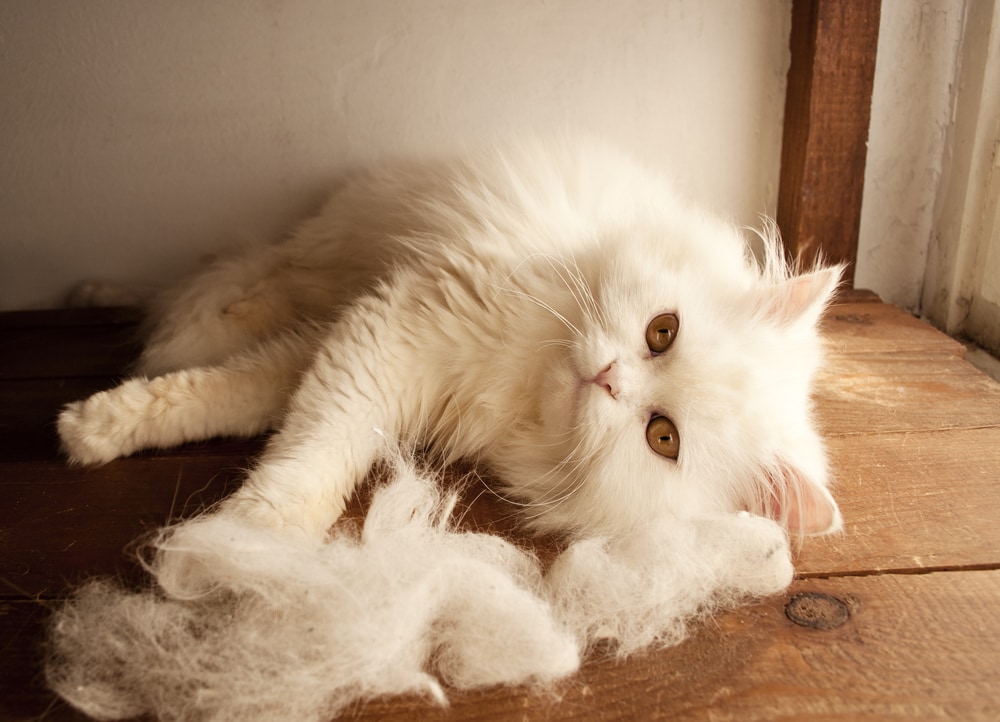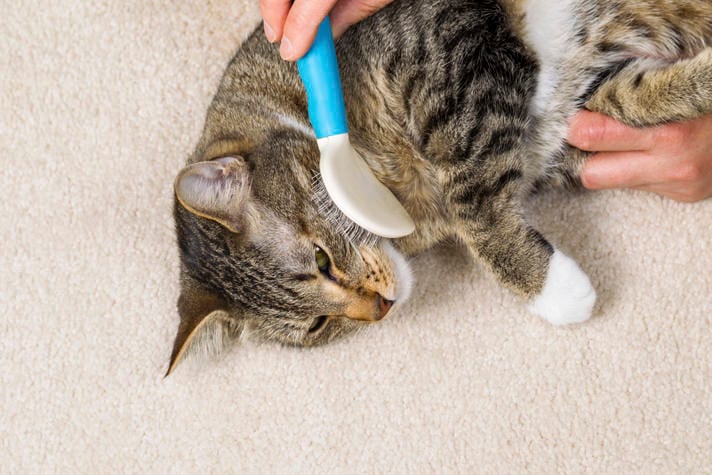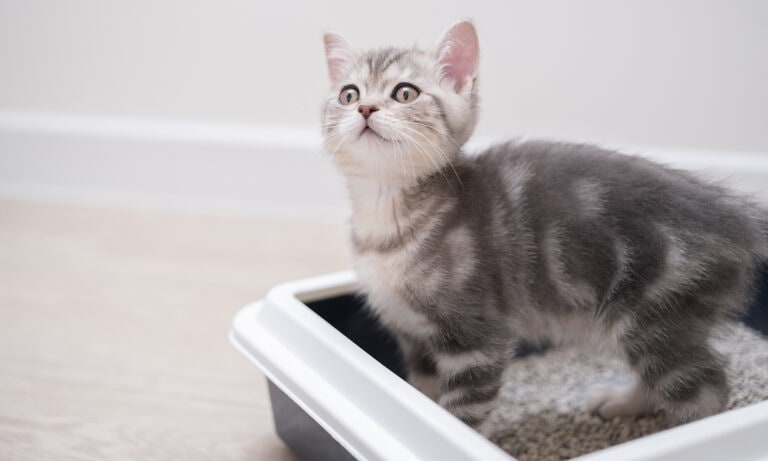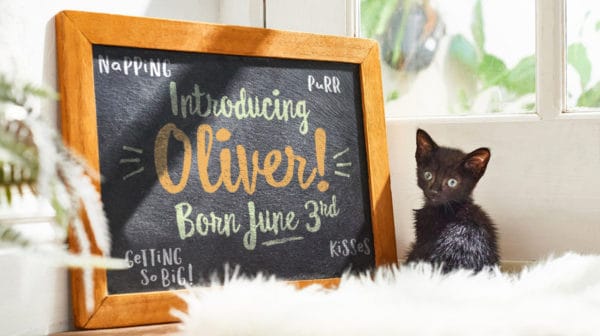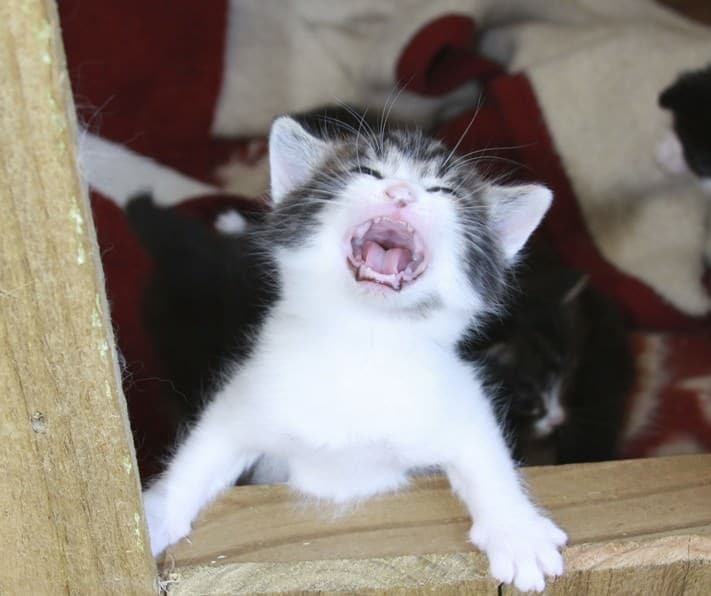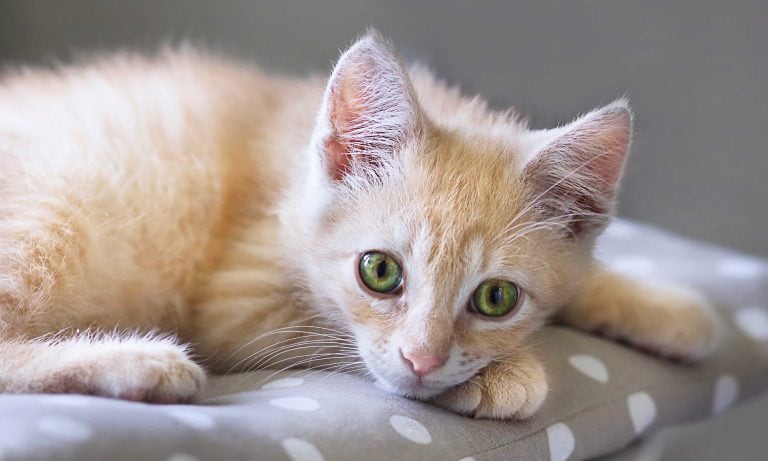Kittens come into this world as perfect purring packages, wrapped in fur. And then at some point, shed happens.
Kitten fur sheds very little until they begin to reach adulthood. Between the ages of 6 to 12 months the coat, which is normally a little shorter and fluffier than the adult coat, begins to fall away to allow the adult coat to begin to grow in. In most kittens, the adult coat is longer and glossier than the fur it replaces.
Your kitten’s fur is its first line of defense from its environment, insulating it from both heat and cold, and protecting its largest organ, the skin. And they have a lot of it — four different kinds to be exact. What first meets the eye is the longer, shinier hairs called guard or primary hairs. Under that lies a layer of shorter, fluffier hairs. These are called secondary hairs, and are also known as “under coat.” Unlike most other mammals, cats also have very fine “awn hairs.” These are thinner than the primary hairs. Last but not least there are whiskers — long, stiff hairs that serve as tactile organs, helping cats to navigate their surroundings.
And here is another fun fact: Cats have what is known as compound hair follicles. This means that multiple hairs grow out of one follicle, sometimes as many as 20! Conversely, humans have just one lonesome hair per follicle. (Yes, I know a lot about cat hair. I am a groomer, after all.)
So what this all means is that kittens have a whole lot of hair packed on their cute little bodies, and when it begins to fall out, that can create problems. What kinds of problems? The kinds of problems that make some pet owners only buy clothing and furniture that exactly matches their cat’s fur color. This can get tricky if you own a multi-colored kitten!
Steps you can take to live with shedding more gracefully
- Feed your kitten a high-quality, species-appropriate diet. A well-nourished kitten will have a beautiful, healthy coat.
- Buy appropriate grooming tools for your kitten’s coat type. Short-haired kittens do well with a cat supplies like a grooming glove or a brush with soft rubber bristles. Longer-haired kittens do best with a good comb that can reach all the way down to the skin to help prevent matting.
- Use your grooming tools at least once a week, and more frequently during spring and fall when seasonal shedding increases the amount of hair that falls out.
- Make sure your kitten is free of both internal and external parasites.
- Keep lint brushes handy — at home, in your car, and at work — to clean up stray hairs on clothing and furniture.
- A sheet, blanket or towel draped over your kitten’s favorite napping spots will make cleanup a breeze, just wash, dry and replace.
- A damp kitchen sponge will lift cat hair off of carpet and upholstered furniture easily.
- Rubber bristled brooms work beautifully on smooth floors, gathering hair tumbleweeds like magic.
- Your vacuum cleaner is your friend. Use it often to keep things tidy.
So why do cats shed, anyway?
Shedding is normal and natural for your pet, and all cats shed. The shorter their fur is, the more quickly the growth cycle is completed, and the more often your cat will shed hair. Hair grows in cycles:
- Anagen: the growth period
- Catagen: the phase where the hair transforms from growing to resting
- Telogen: the inactive phase
- Exogen: the period where hair falls from the follicle
Long-haired cats appear to shed more, because the long hair is more obviously visible to us when it is stuck to our sweater, but in reality, long hair stays on the cat growing for a longer time due to its longer growth cycle.
The number of hours of daylight your cat is exposed to affects seasonal shedding. In the fall, as the days shorten, your cat will shed its light, summer coat to make way for the more dense winter coat that is ready to keep your pet warm and cozy. Conversely, in the spring, when the days get longer, that heavy winter coat comes out in clouds.
A warm bath during times of heavy shedding can help to hasten the process along. Combing the coat until it is dry will remove an amazing amount of shedding coat. Remember, the more you comb and brush out, the less you will have to vacuum up!
Keeping control of shedding hair not only makes housekeeping easier, it helps to reduce the incidence of your kitten getting hair balls. As cats self groom by licking themselves, tiny hooks on their tongues catch the hair that is removed and the cat swallows it. In most cases the hair passes through the entire digestive tract without incidence, but sometimes a clump of hair will remain in the stomach, and then be vomited back up. Cats have a real knack for depositing these wet things just where a bare human foot will find it in the dark. The only thing worse than having your cat vomit up a hairball is if they don’t. Retained hairballs can require veterinary care.
The beautiful packaging that wraps up your special kitten is one of the things that makes your pet so delightful to see and touch. Keeping shedding under control need not be a dreaded chore. Simple steps can maintain your kittens coat and allow you to choose clothing and upholstery in shades other than those your kitten wears.
By: Daryl ConnerFeatured Image: Via DreamBig/Shutterstock
Fur-ustrated With Fur?
Share:
